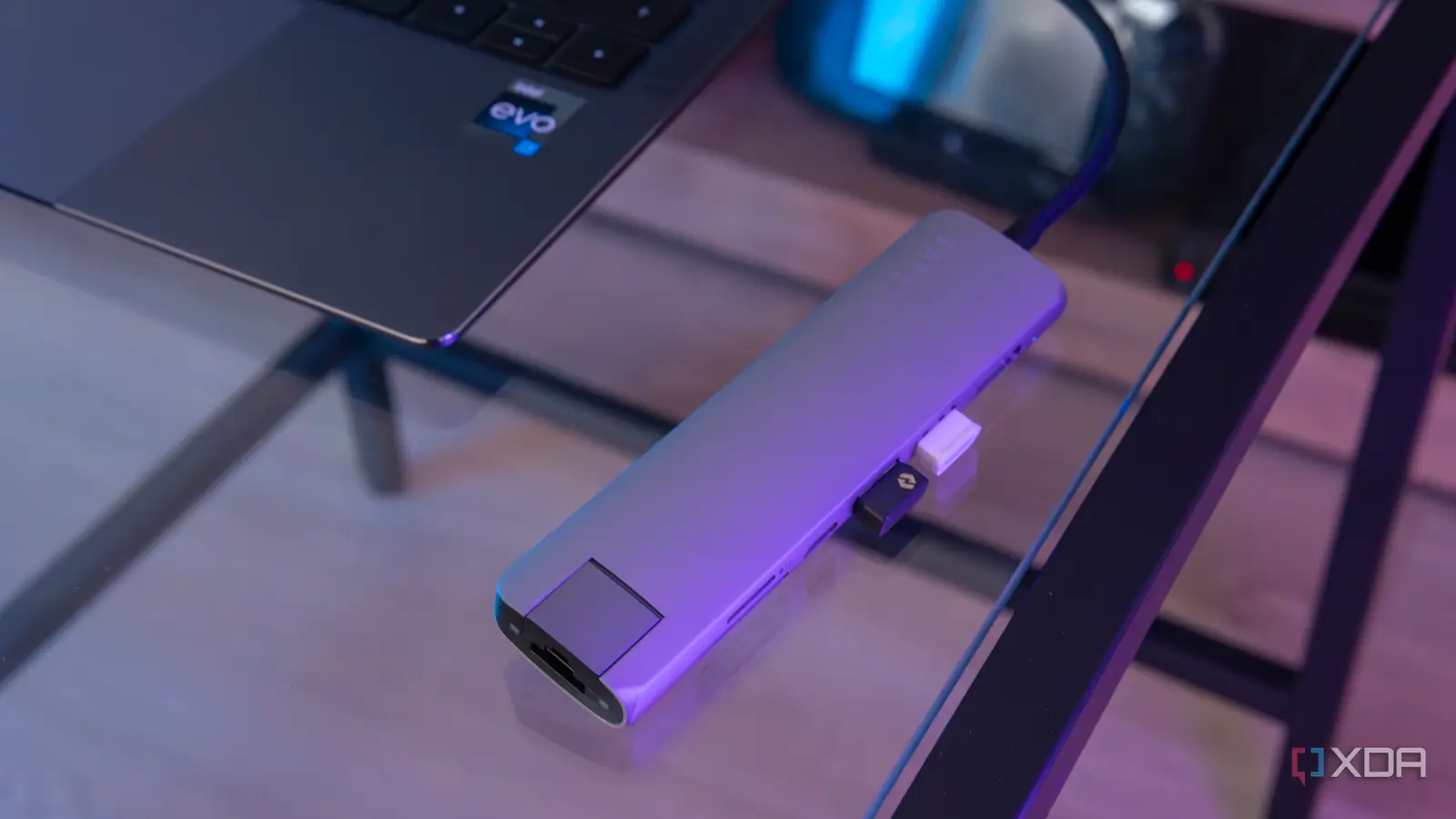Copyright XDA Developers

If you've got to work from home on a laptop for any period of time, there are a few inconveniences built into the laptop experience that make a hybrid work environment somewhat lacking. While there are a number of laptop accessories you can buy and home office upgrades you can snag to make working off your laptop easier, the one small change I made to my home office that really made a difference was a simple USB-C adapter. Whether you get a single-port adapter or opt for a USB-C dock or USB-C hub, upgrading to USB-C for your laptop offers a number of advantages, from faster data transfer speeds, portable monitor and display connections, and higher power delivery for faster charging. And that's the kind of benefit that will makes me significantly more productive when using my laptop. Improved performance for better productivity USB-C is the superior USB format for good reason Your laptop may have more than one USB-C port like mine, but even if you've got just one USB-C port, it's worth getting an adapter for all your peripherals. Switching from USB Type-A to USB Type-C offers significant benefits in transfer speeds, with USB-C connections supporting up to 40Gbps with USB4 and Thunderbolt 4 protocols, while Thunderbolt 5 brings that up to 80Gbps, though few devices need Thunderbolt 5 power just yet. USB-A ports topped out at a maximum of 20Gbps with USB 3.2 Gen 2x2 (though most USB-A ports topped out at 10Gbps with USB 3.2 Gen 2). USB-C supports power delivery 3.0, which can deliver up to 100W of power to your devices, which will significantly cut down your laptop's charge time. Though some USB-C ports won't offer the full 100W power delivery, this is highly dependent on your laptop and its power rating. But USB-C is also unique in that power flows in both directions from a USB-C port, which can allow you to charge your phone from your laptop or power an external display. Being able to charge my devices and benefit from increased data transfer speeds absolutely smoothed out my workflow, allowing me to get more done in a day as I spend less time waiting for files to transfer from an external SSD or SD card to my laptop. And I get to make sure my laptop and phone are charging so all those work notifications don't drain my smartphone's battery in just a few hours. USB-C is also a single cable solution that can handle data, video, and power signals in both directions. So I can use the same USB-C port to charge my laptop, my phone, transfer data between both devices, and connect a monitor simultaneously which leaves my laptop's extra IO ports open for any additional accessories I might need for a story or project I'm working on. It changed my workflow Powering my home office with my laptop has never been easier USB-C hubs are helpful for plenty of reasons, but ultimately, a USB-C hub adds ports to a laptop, mini PC, gaming handheld, or single-board computer for easier use. And that's not something to underplay. It may seem like a no-brainer, but using a USB-C hub to power my home office with my laptop has been game-changing in the most boring way. I can now use my laptop at home and on the road without missing out on the convenience of using a desktop PC at home. Using a USB-C hub, I can connect my standard monitor, keyboard, and mouse to my laptop and get a desktop with two screens. It may not seem like much, but having my laptop propped up next to my monitor gives me additional screen real estate to track Slack messages on my laptop while keeping my work open on the larger 27-inch monitor. Adding my keyboard and mouse to the USB-C hub instead of the laptop's built-in ports or Bluetooth connection also makes it easier to unplug my laptop and throw it in a bag to work from a coffee shop or head to the airport or office. While cloud syncing systems have gotten better, not having to sync across devices at home and on the road doesn't just save time waiting for data to sync; it also gives you peace of mind. My cloud syncs are just backups, and not essential parts of my workflow. Plus, as someone who often uses a MacBook for travel and a Windows 11 PC at home, streamlining to one device has absolutely saved me a ton of pain with the macOS-to-Windows data-sharing hassle. It's not like I don't still use my desktop, but it's become something I turn on at home when I need more computing power, like when I'm editing videos or getting ready to settle in to a long game session. You don't even need to get fancy Just a simple hub will do Whether you opt for a slim travel hub, a thin USB-C adapter, or a larger docking station, it doesn't really matter. I went for a small travel hub simply because I had one available at hand. The major benefit to utilizing a USB-C adapter was streamlining my life and making me more productive at work. But I can also use that same USB-C adapter for a Raspberry Pi project or to connect my handheld gaming PC to a monitor for a better at-home gaming experience. And because USB-C is the current universal standard, it's a great option for laptops, desktops, mini-PCs, gaming handhelds, and single-board computers. USB-C has been in use for about a decade now, so its available on just about all of my devices, from a dusty old Raspberry Pi 3 to my ancient GTX 1060 gaming laptop that's seen better days. For me, at least, connecting my older MacBook to my monitor was a home office breakthrough.



